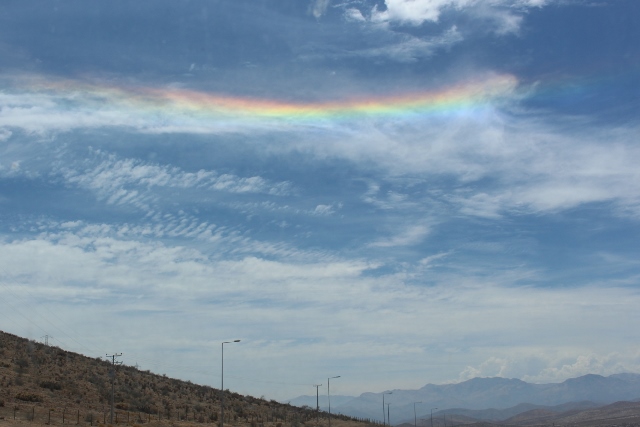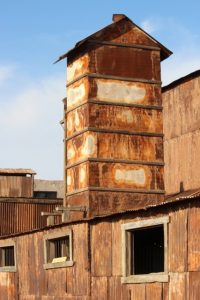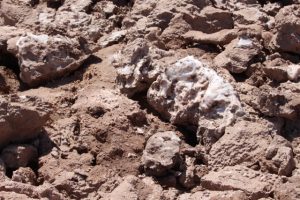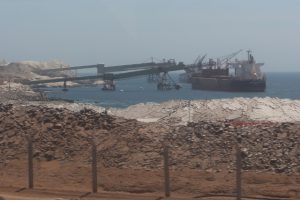How the north of Chile, part of which was formerly Peru and Bolivia, has been a matter of boom and bust thanks to its rich variety of commodities.
Before we push into the Ncorte Grande, as the northernmost part of Chile is known, it is perhaps useful to discuss a little history, especially that part that has had such an impact on the north. In his beautifully written “Desert Memories: Journeys Through the Chilean North” Ariel Dorfman, Chilean novelist and poet, remarks on how Chile has been so dependent on commodities in its recent history. We all know about the gold and silver that attracted the Spanish conquistadores, of course, but Chile didn’t have much of that. Lesser known is the nitrate boom of the 19th and early 20th Century, which in fact started in the mid-1800s with the discovery of caliche. The Chilean form of caliche is a hard rock layer several meters below the surface which contains salitre, also called Chilean saltpetre, a mixture of nitrate salts. Nitrate occurs in many more places around the world, but nowhere in such density and such high quantities that it made economic sense to mine it.
What is was used for? In small quantities saltpetre was used in gun power, already a long time back. But when the potential as fertilizer was recognised, boosting agricultural production in California and Western Europe, where farmers were prepared to pay handsomely for the refined white powder, saltpetre became a valuable mining commodity. So valuable, in fact, that three newly independent South American countries went to war over the control of the nitrate fields. In 1879 Bolivia and Chile started hostilities over a disputed mining tax, and Peru was dragged in by treaty with Bolivia, in what became known as the War of the Pacific.
This is not the place to discuss the causes of this war in great detail, but economic reasons were certainly an important part of it. Peru was attempting to establish a monopoly over the nitrate export, and had urged Chile to cut its production, which Chile refused. Bolivia, perhaps, or perhaps not encouraged by Peru, with whom it had signed a secret treaty in 1873, levied a mining tax on Chilean companies, against earlier agreements not to do so for at least 25 years. When Chile refused to pay, Bolivia confiscated the mining properties, to which Chile’s reaction was the occupation of Antofagasta, then a Bolivian port. Long story short, military superior Chile won, occupied large parts of the Atacama desert, and ultimately settled the dispute in 1884. After which both Peruvian and Bolivian territory had ceded to Chile, and Bolivia lost its access to the sea – still a sensitive issue. And from then on Chile controlled the nitrate business.
Initially, Oficinas de Compra were established, companies that bought the mined products from independent workers, small-scale miners who won clumps of raw nitrate from the rocks. In 1850s more industrial method was developed, allowing for lower grade caliche to be mined and refined too, further improved in the 1870s by the British chemical engineer Santiago Humberstone. The Oficinas became small towns, company-owned, entirely dedicated to the mining and refining of nitrate. They were largely populated by labourers under contract, who lived in company accommodation, and who got paid not with money, but with tokens, which could only be used in the town’s general store. Coincidentally also owned by the mining company. Or in the theatre, or the cinema, or other entertainment locales. Also owned by the company. Modern serfs. Who ultimately became unintended victims of another war, the First World War, some 40 years later.
In 1910 Chile supplied 65% of the world’s nitrate-based fertiliser. Twenty years later this had dropped to a mere 10%. Because of the war Chilean ships could not reach Germany anymore, and the supply of nitrate came to a halt. The Germans, desperate for fertilizer, found an alternative in the laboratories. And from then on didn’t have any need for Chilean nitrate anymore. After the war they marketed their new discovery, which was cheaper, cleaner, easier.
Not all the nitrate business stopped immediately, but the boom was over. Many of the Oficinas are now ghost towns, nobody living there anymore, most of the buildings derelict, or gone altogether. At the end of the 20th Century there were only two working nitrate towns left, Maria Elena and Pedro de Valdivia, both a couple of hours north of Antofagasta. However, their methods of extraction were developed only in the 1930s, and are more modern then the original hard labour required to mine the white gold of earlier. And further north, originally opened as the Peruvian Oficina La Palma in 1862, is Humberstone, which was reopened in 1932, and renamed after the British engineer. Humberstone is the perfect ghost town, everything – shops, theatre, houses – still largely intact. Together with nearby Santa Laura, where the production facilities are located, this has been dedicated as a museum to the nitrate business. So important for the development of independent Chile, and now almost forgotten.
Luckily, the world that didn’t need nitrate anymore, did need copper. And luckily, Chile also has vast amounts of this mineral in its territory. To the extent that at the beginning of the 21st Century Chile supplied some 60% of the world’s copper. Much of it derived from the world’s largest open pit copper mine Chuquicamata, located somewhere between Maria Elena and Pedro de Valdivia, and close to Calama. Northern Chile’s commodities remain a very important element in the country’s economic workings!
next: Antofagasta

and to add a bit of colour: an unusual appearance, this looks a horizontal rainbow – nothing to do with the story, of course, except the location, the Atacama
















